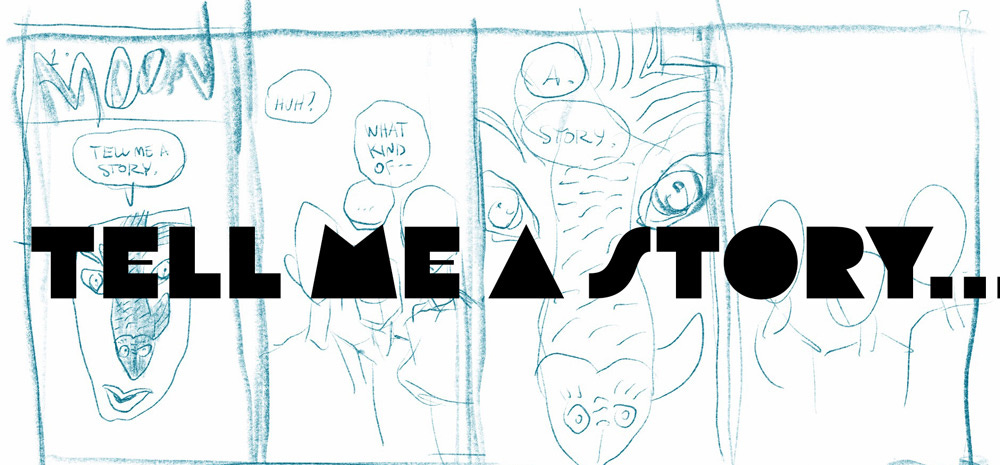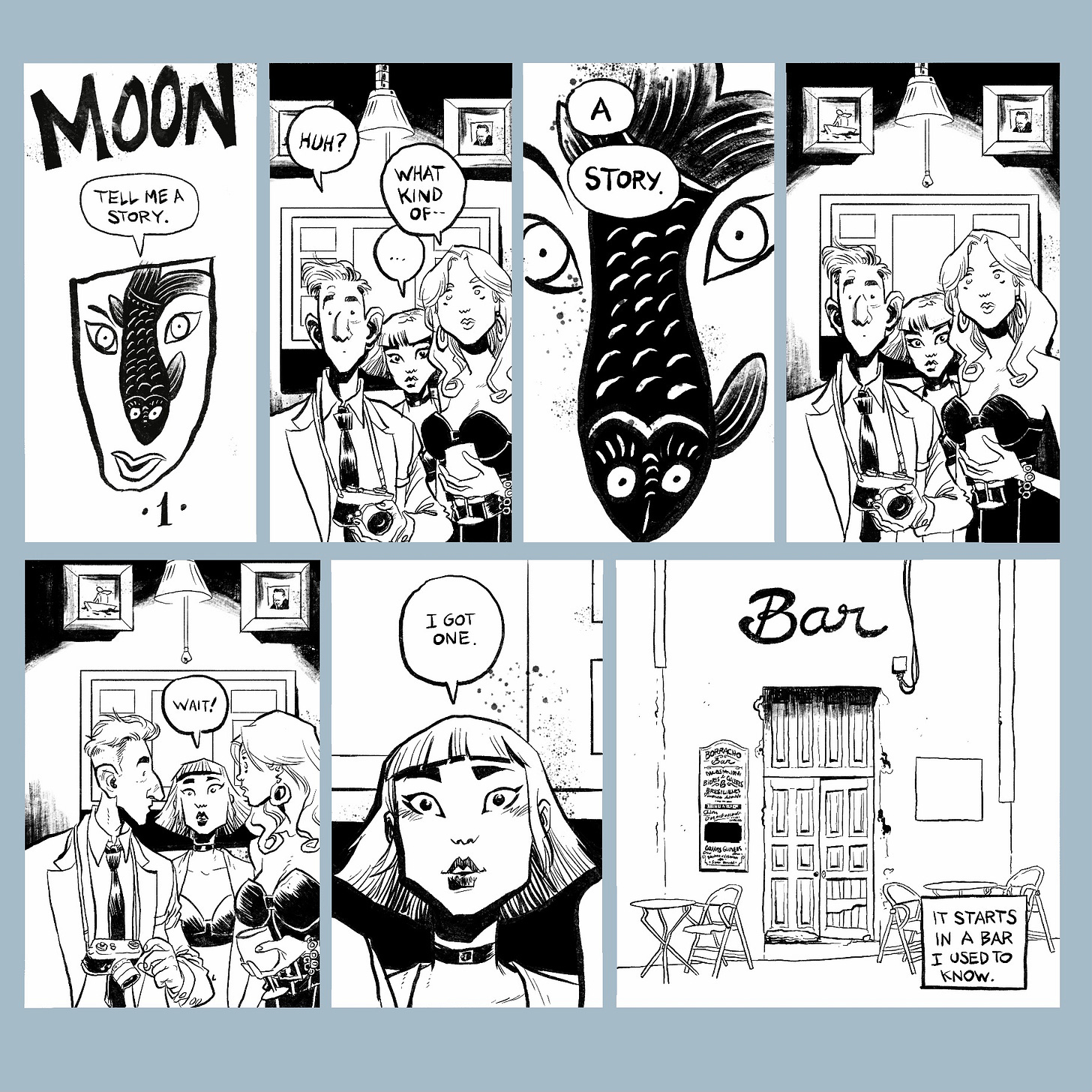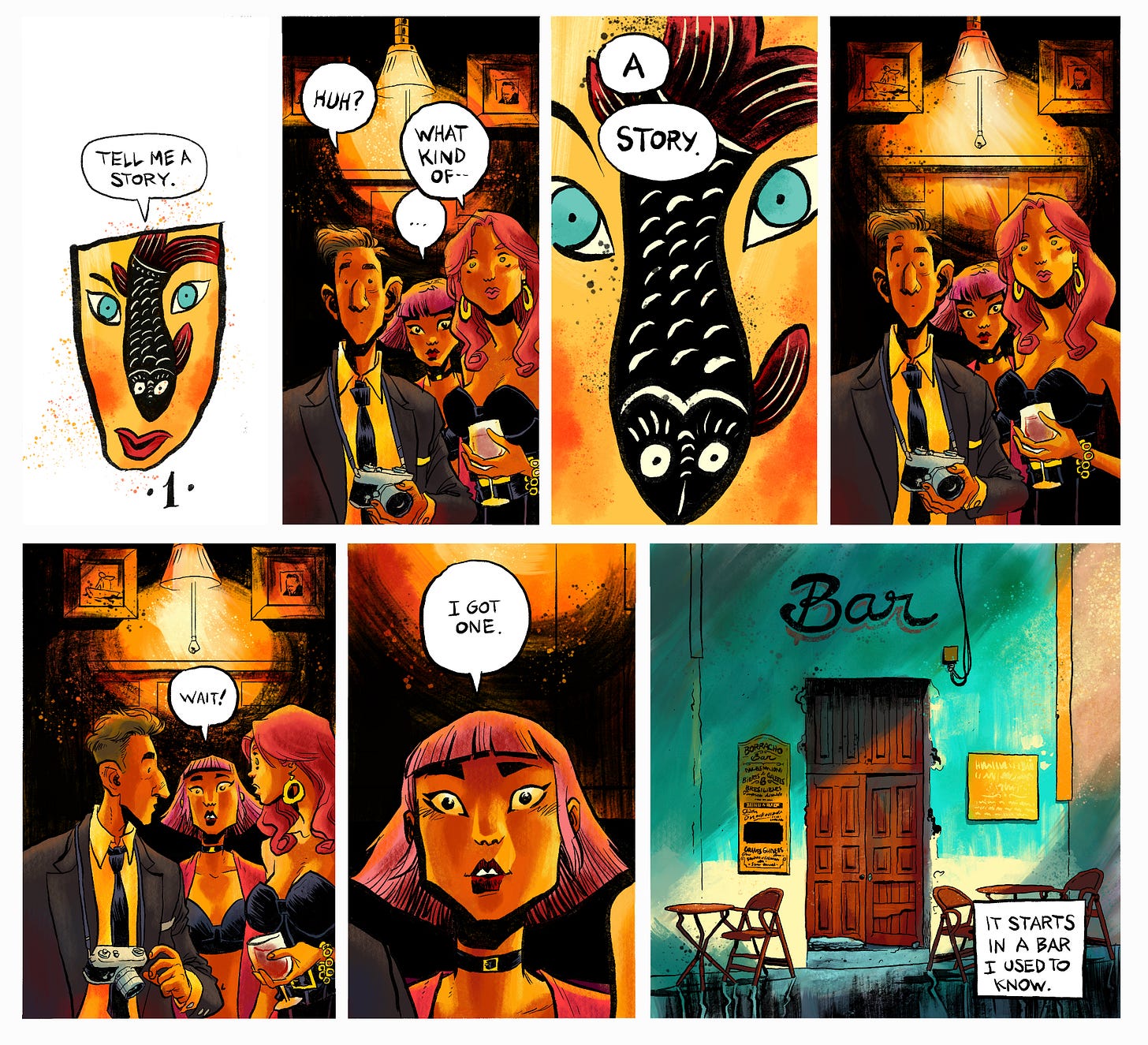Tell me a story...
I have been illustrating my newsletter for the past few weeks with this one page I made to practice drawing entirely digitally. As with many of my short stories, most of the inspiration came from browsing the internet, preferably my Pinterest archives, in search for interesting images, characters, places and situations. This page in particular was created to try to create two distinct moody images: the dark room the characters are, which can be a bar, a living room, a hotel; and the facade of this bar on a dramatically lit street.
My brother pointed out to me that the background of the panels with the characters doesn’t help to convey the “dark interior” mood I wanted, and we talk about Mignola and Eduardo Risso, and how sometimes you have to think about the visual elements of your background in more graphic terms, and how they would probably black out the entire wall and only have the frames of the pictures hanging in the wall visible, to give a touch of texture to the otherwise dark background. Even when I told him I was planning on using colors to help make that scene dark, we agreed I needed to use more black on the background, but since my style has a bit more brush strokes and lines than both Mignola’s or Risso’s, I did not go full black on the background.
I was talking this past Friday with a photographer I know about exploring digital tools. Like in drawing, photography and film making changed drastically with the advent of digital, mostly increasing the visual possibilities of all these fields, and I was saying him that, for me who usually draw with a brush, the main exercise when drawing digitally is facing the fact that I can do on paper things with one brush, and on digital I’ll probably have to use three or four digital brushes to achieve the same effect. This is my adjustment, using more tools to make my work look like my work.
You’ll notice on the second inked version of the page that I used more digital brushes: one to give a dry brush look to the floor of the sidewalk on the last panel and to to give a more expressive look to the spots of light on the wall behind the characters, and I also used a splattering brush to sprinkle some drops of black and some drops of white on the panels, giving the drawings a more organic look. Both this techniques I can do on paper using the same brush I use to draw and make the clean lines of my style.
I have to tell you that this first coloring stage, when we make flat colors to separate the shapes and make it easier to work on them one at a time, is harder to do on this software app I’m using (ProCreate) than on Photoshop, which is the software I have been using for over twenty five years. Photoshop has more options, and they’re also more visible and easier to find. I’m curious to find out if professional colorists, coloring other people’s pages, are migrating to ProCreate like the artists drawing the pages (it’s a very seductive app for drawing), or if they’re sticking with Photoshop because not only they’re used to it, but also because it still gives them more options and make a better final product.
I spent two days coloring this page. There wasn’t anything particularly difficult about it, but I was just taking my time testing the different tools, seeing what the “digital watercolor” looked like, or choosing between a Pastel or Crayon look to use on the characters, or mixing everything in ways that looked natural, trying as much as I could to finish this page and make sure the reader pays attention to the story, and believes the situations, and does not stop to think about what brush I used to color the outside wall of the street bar. At the end of the day, all the work I put into making comics, and drawing painstakingly detailed panels, is to be invisible, which is to say that the important thing, the most important thing, is for the reader to forget about the artist and dive into the story. If we do our jobs right, the readers will remember the stories we do like a movie, and often they’ll remember scenes that happened between the panels, on the gutters of their imaginations.
This was an exercise. But what if it wasn’t? What if suddenly I looked at the short little girl who remembered this story she knew and immediately I also knew the story and decided to continue telling it? And what if someone else also remembered a story of their own after the first one was told?
Be safe. Be kind. Be curious
Pa-ZOW!
Fábio Moon
Moon Base, São Paulo
November 22nd, 2021








